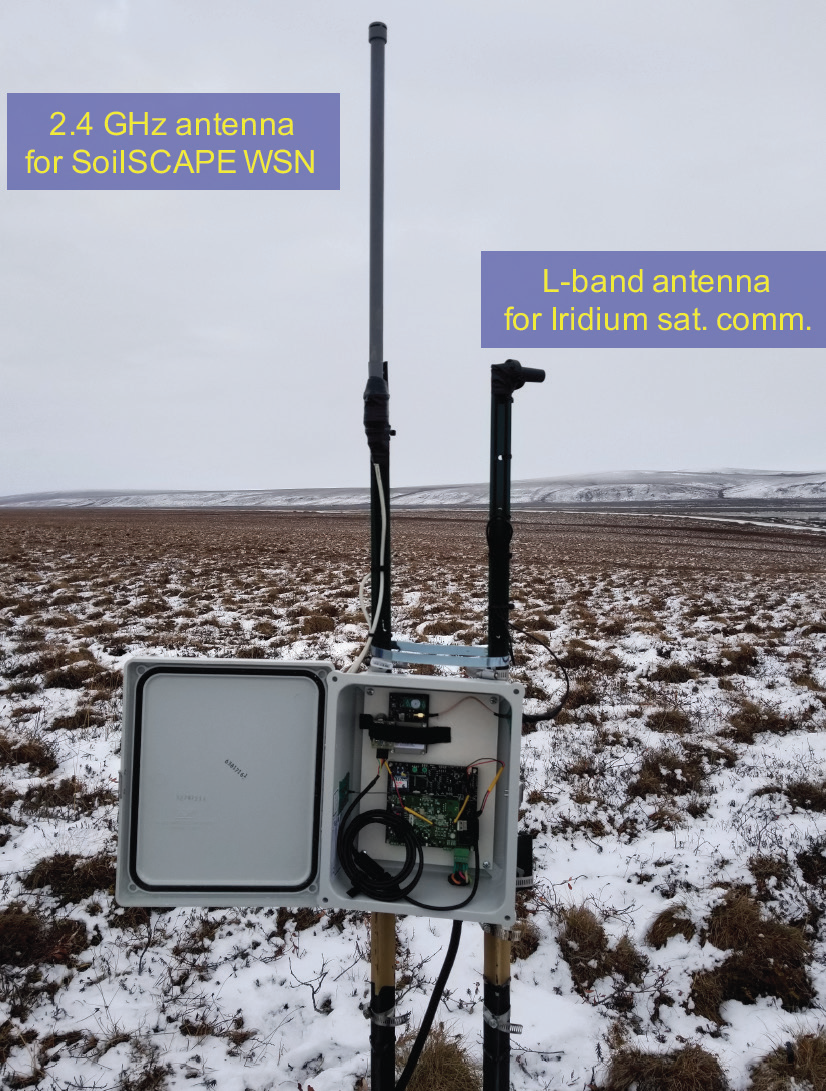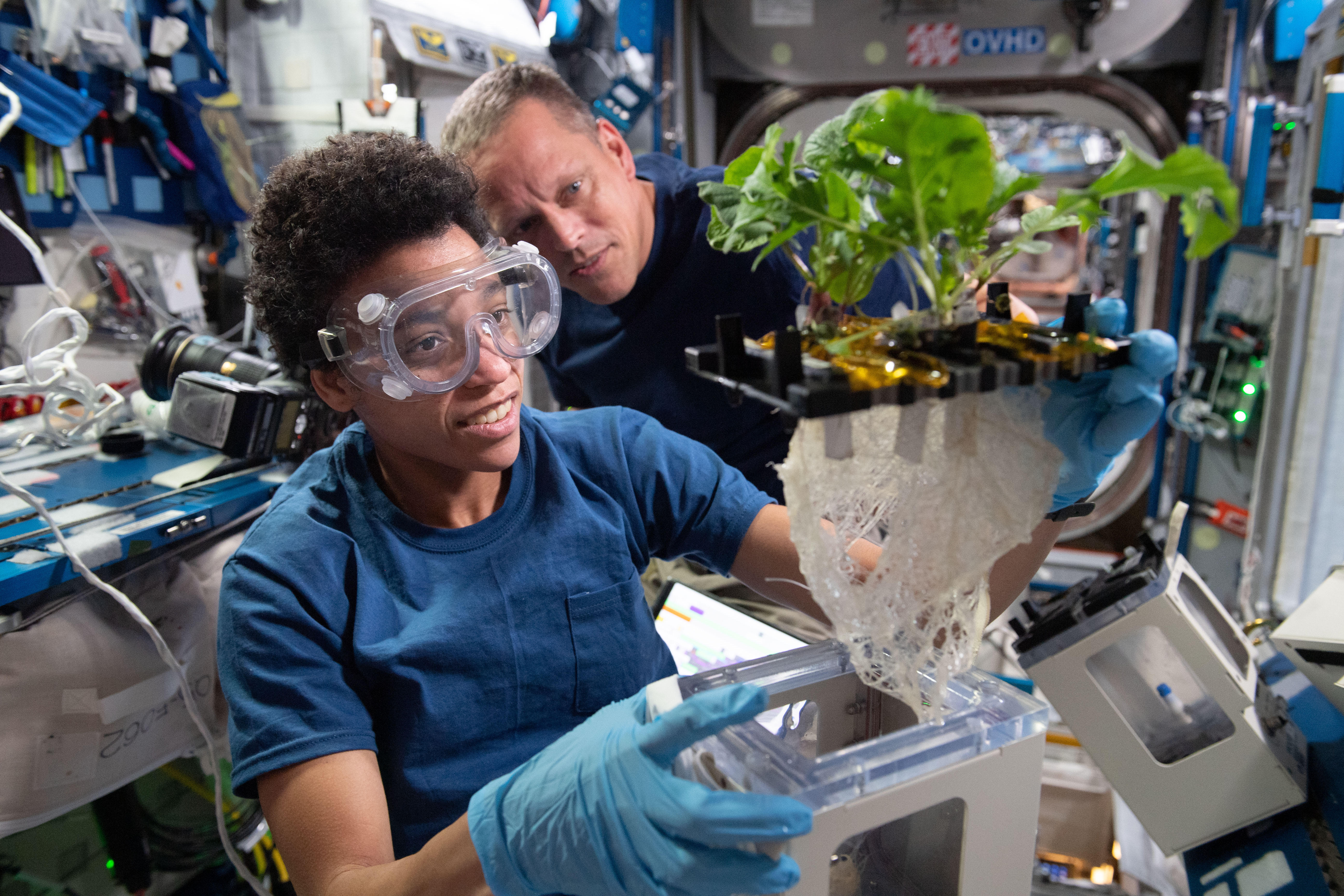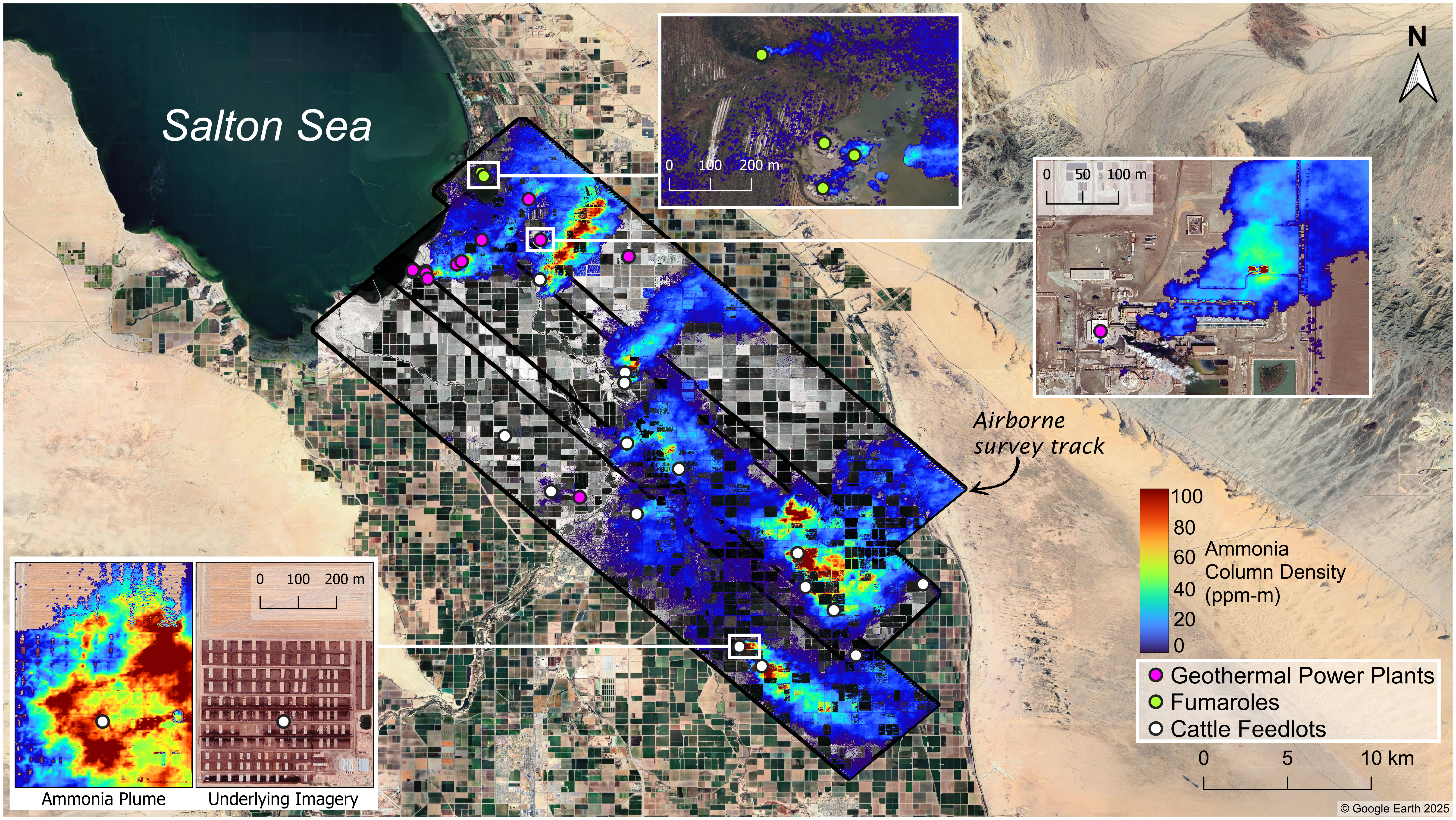Technology Development
Accurate measurement of soil moisture is important to numerous fields including agriculture, weather prediction, and the study of climate change. An SMD-sponsored project—the Soil moisture Sensing Controller And oPtimal Estimator (SoilSCAPE)—is helping scientists monitor soil moisture at several sites in the continental U.S. and Alaska. SoilSCAPE sensor webs are autonomous, wireless networks that provide near-real-time data on soil moisture profiles. Recently, SoilSCAPE teamed with NASA’s Arctic Boreal Vulnerability Experiment (ABoVE)—a far-reaching, 10-year, NASA-led field campaign that kicked off in 2016—to study environmental changes and ecosystem vulnerability in the Arctic. The SoilSCAPE team successfully installed and tested two networks of in situ soil temperature and moisture sensor webs in Alaska that are providing measurements to support ABoVE.

SoilSCAPE networks were initially developed to validate data from airborne and spaceborne missions such as NASA’s Soil Moisture Active Passive (SMAP) mission. Previous SoilSCAPE deployment locations included sites in California, Arizona, Michigan, and Oklahoma. The California and Arizona sites are still collecting and providing data in real time. To support operations in the harsh Arctic environment, the SoilSCAPE team had to enhance the network’s hardware. In addition, SoilSCAPE communication interfaces were redesigned to enable energy-efficient transmission of the data from the remote region via Iridium satellite links.
Beginning in August 2016, the SoilSCAPE team placed several sensor nodes within the permafrost active layer at two Alaska sites—Happy Valley and Prudhoe Meadow. Each node contains soil probes at four depths, ranging from 5 cm below the tundra surface to near the permafrost table. Data from the probes are gathered at each node and wirelessly transmitted to a locally placed base station (coordinator). The coordinator re-transmits the data via cellular or satellite connections to the laboratory, where it is decompressed and made available to users via an online database. The team can also send signals to the coordinator, asking it to task the nodes on demand.
Following several months of testing, the two arctic SoilSCAPE sites supported the ABoVE campaign’s scientific research flights from April through October 2017, providing in situ soil moisture and temperature data to complement the airborne measurements and to provide validation data for airborne data products. In addition, data from these SoilSCAPE sites have provided scientists with new insights about the timing and the profile characteristics of freeze-thaw transitions that occur in the permafrost active layer. The network continues to collect and transmit data, even during the winter months.
More information on SoilSCAPE, including access to SoilSCAPE data, is available online at: http://soilscape.usc.edu.
Impact
Measuring soil moisture and temperature profiles in the permafrost soils of the Arctic is especially crucial to support climate change research because these regions are experiencing the effects of climate change faster than anywhere else on Earth. By supporting the ABoVE project, SoilSCAPE is enabling critical research to understand and predict arctic ecosystem change and vulnerability. The results of these studies have significant societal impacts; they allow scientists to understand the feedback from climate warming and permafrost thaw trends and to characterize and predict damage to infrastructure in arctic communities.
Future Plans
The SoilSCAPE team expects the two Alaska sites to operate unattended for 1-2 more years, continuing to gather valuable soil moisture and temperature data on the permafrost active layer in this remote, but important, region. Multi-year, high-temporal-resolution data from such networks, in synergy with temporally sparse but spatially diverse airborne and spaceborne remote sensing products, will also enable scaling up of in-situ observations to regional domains.
Sponsoring Organization
The Earth Science Division’s AIST program provided the funding for the development of the SoilSCAPE project. The Principal Investigator is Mahta Moghaddam at the University of Southern California.



































